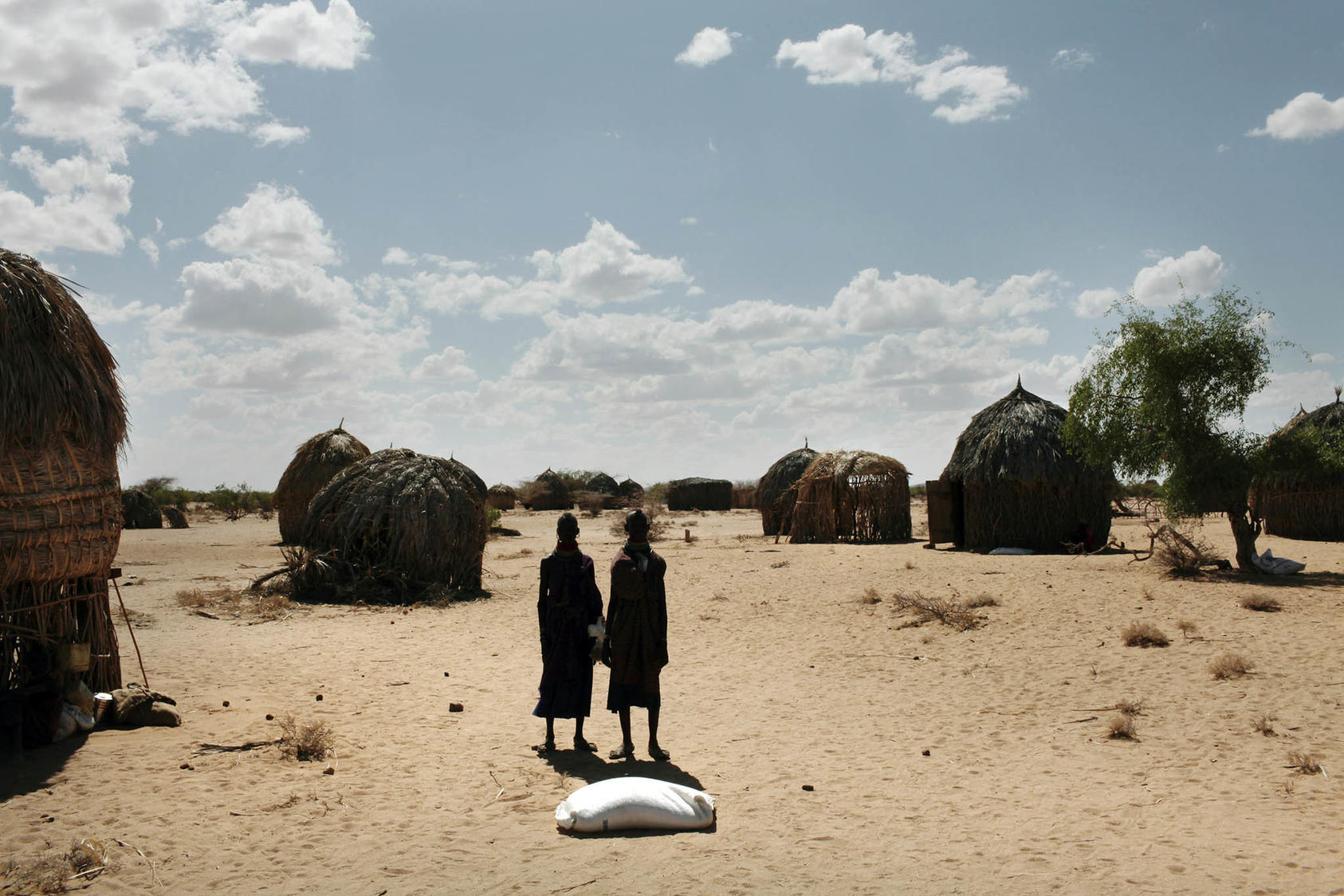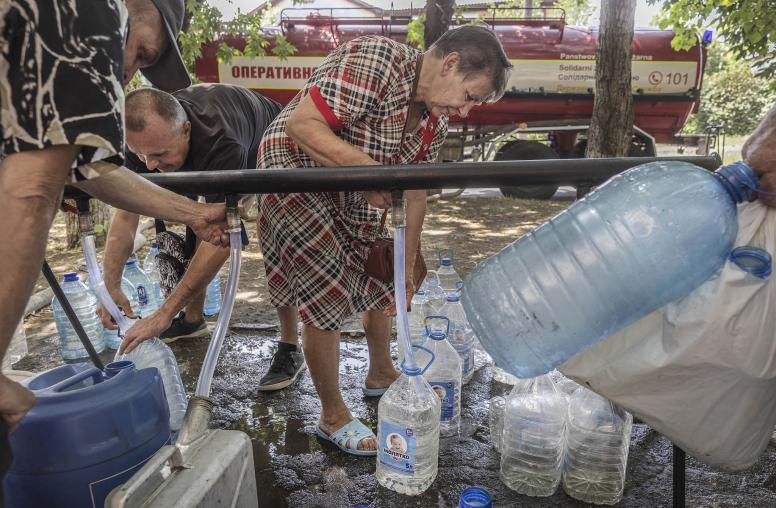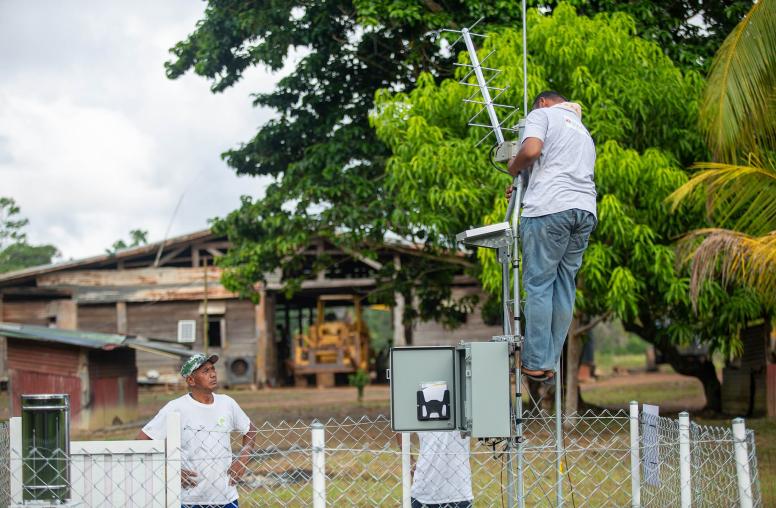Conservation and African Rangelands: From Conflict to Coexistence?
An interdisciplinary response that recognizes historic context and can deliver benefits key to sustaining peace is needed.
Sub-Saharan Africa’s population will nearly double to more than 2 billion by 2050, surpassing Asia by 2070. African policymakers recognize this trend and have focused efforts on increasing economic productivity. Native rangelands — the uncultivated grasslands, shrublands, woodlands, wetlands and savannas where wild and domestic animals graze — cover 43% of the continent’s land area. But rangelands have often been perceived as undeveloped areas and centers of degradation, erosion, desertification, droughts, famine and conflict. These vast areas, and the people they support, tend to be pushed to the periphery of political agendas, allowing root causes of degradation of land and livelihoods to fester and ultimately contributing to a vicious cycle of tension and conflict.

More recently, ecologists and economists have worked together to counteract the notion that African rangelands and pastoralism are unproductive and mismanaged systems. Rangelands are implicated in a diversity of essential ecosystem services — from carbon sequestration and food provision to cultural heritage — and contribute significantly to livelihoods. Following the increasing global recognition of the importance of rangelands, a proposal to declare 2026 the International Year of Rangelands and Pastoralists (IYRP) was endorsed by the U.N. General Assembly in March 2022. The intention of celebrating the IYRP is to raise the profile of rangelands and pastoral societies worldwide and to enhance recognition of their valuable contribution to the economy, environment, society and culture at a local, national and global level.
Conservation Critical, but Contested
While conservation has been important in protecting rangelands, it comes with a history of exclusion of the communities historically dependent on those lands for their livelihoods. Many national parks in sub-Saharan Africa were developed to safeguard populations of wild animals for hunting by the wealthy colonialists with little to no regard for the communities who had sustainably coexisted with wildlife for centuries. Fences to safeguard wild species also excluded pastoralists from utilizing their historical grazing lands and hindered migratory patterns, forcing them to use less productive segments of land to pursue their traditional practices. In the absence of a centralized state administration of land rights, pastoralist societies traditionally used lands over which they held sovereignty. Establishment of government control, combined with economic incentives, has led to potential grazing land simply being appropriated. For the Nama people of the Richtersveld in South Africa, it took 18 years of negotiations with the National Parks Board before they could claim title to their traditional land.
More recently, many African national governments have focused their attention on the economic growth opportunities of rangeland ecosystems through tourism and hunting industries, as African rangelands are home to some of the world’s most important biodiversity hot spots and iconic mega wildlife species. While ecotourism has played an important role in securing protected areas for wildlife, deep-rooted dynamics — such as the high value placed on wildlife and “wilderness” by the affluent Global North over the interests of rural communities — are still visible. Only when local communities are adequately consulted, and compensated where necessary, can tensions be mitigated, as happened with the Richtersveld National Park after groups protested against the exclusion of indigenous peoples.
Policy, Economic and Climate Pressures Collide
While the conservation of rangelands and their iconic species expands, these areas and the livelihoods they have historically sustained are facing pressure due to political incentive structures, economic trends and other factors that are intricately linked to security at the community and broader levels.
Africa’s growing demand for food and improved irrigation techniques means crop farming is encroaching into what’s left for pastoralist grazing. The numbers and political power of the crop farmers, as well as tenure regimes that are more supportive of agriculture than livestock herding, position crop farmers advantageously in political contexts. Conflict over land use often forces pastoralists to move even further into drier areas where crop farmers can’t follow. For example, the construction of a dam in Senegal to develop large irrigation schemes deprived herders of traditional dry season pasture in the river valley they previously relied on, but further demand for farmland meant crop production would keep expanding toward newfound pastures, further limiting options for pastoralists.
Climate change means action is even more urgent because pastoralist communities are among the most vulnerable to its worsening impacts, further exacerbating these dynamics. Increasing duration and severity of droughts have caused unprecedented livestock deaths, plunging pastoralists further into poverty. In desperation to cut losses to their herds, some pastoralists might move earlier due to poor rains, and may encroach upon crop fields before agrarian communities have finished harvesting (or even into protected areas, driving risk of wildlife-livestock conflict, resulting in predation, disease spread as well as poaching). Farmers and pastoralists each blame each other for reduced yields, production and income.
Looking Ahead
Such interconnected challenges merit a system-level, interdisciplinary response that recognizes the historic context and can deliver social, environmental and economic benefits that are foundational for the well-being of nature and people — and for sustaining peace. Governments, conservation and development organizations, and peacebuilders should leverage the IYRP, global agendas such as the Global Biodiversity Framework’s 30 by 30 commitment and the 2023 U.N. Climate Change Conference of Parties’ (COP28) focus on health, relief, recovery and peace, and growing regional recognition of the climate-security-development nexus for action toward restoring land and communities.
Pastoralists and indigenous groups need to be brought into the conversation regarding the establishment and management of protected areas. For example, in Kenya, when pastoralists are included in the establishment and management of protected areas, they are more likely to value biodiversity and can alert authorities to poaching and protect water sources for joint use by wildlife and livestock.
Efforts leveraging conservation as an entry point for international cooperation must also be based in a deep understanding of the root causes of environmental conflict and the inclusion of local communities’ needs and interests. Often, this means an integrated approach where livestock and wildlife can thrive alongside each other. In some transfrontier conservation area (TFCA) initiatives, which rely on peaceful cooperation across borders to be successful, livestock grazing approaches that enable coexistence with wildlife are already being shared and implemented by pastoralists. On the Mozambique side of the Great Limpopo TFCA, for example, novel mobile predator-proof bomas, or enclosures, ensure cattle are kept safe at night. Skilled herders are trained on how best to strategically move and kraal their livestock to avoid wildlife, while using hoof action and manure to regenerate degraded areas of land and lock carbon into the soil.
Innovative policy approaches should incentivize household- and landscape-level resilience and improved income to support sustainable alignment of regional economic, peace and climate adaptation agendas. Commodity-based trade policy adjustments are particularly beneficial for African farmers, enabling farmers to prove their commodities are disease-free, despite farming alongside wildlife. Farm-to-fork tracking mechanisms can be used to ensure farmers who farm with best environmental and social practices can access the most lucrative markets.
Rangelands need no longer be seen as degraded wastelands simmering with conflict. Rather, by working across sectors and inviting previously marginalized voices into the conversation, we can begin to address historic tensions with innovative, system-level approaches which also aim to build resilience against the ever-increasing climate-related disasters.
Anna Haw is the regional manager of the African Rangelands Program at Conservation International.
Nora Moraga-Lewy is a former manager, peace and conflict resolution, at Conservation International.



